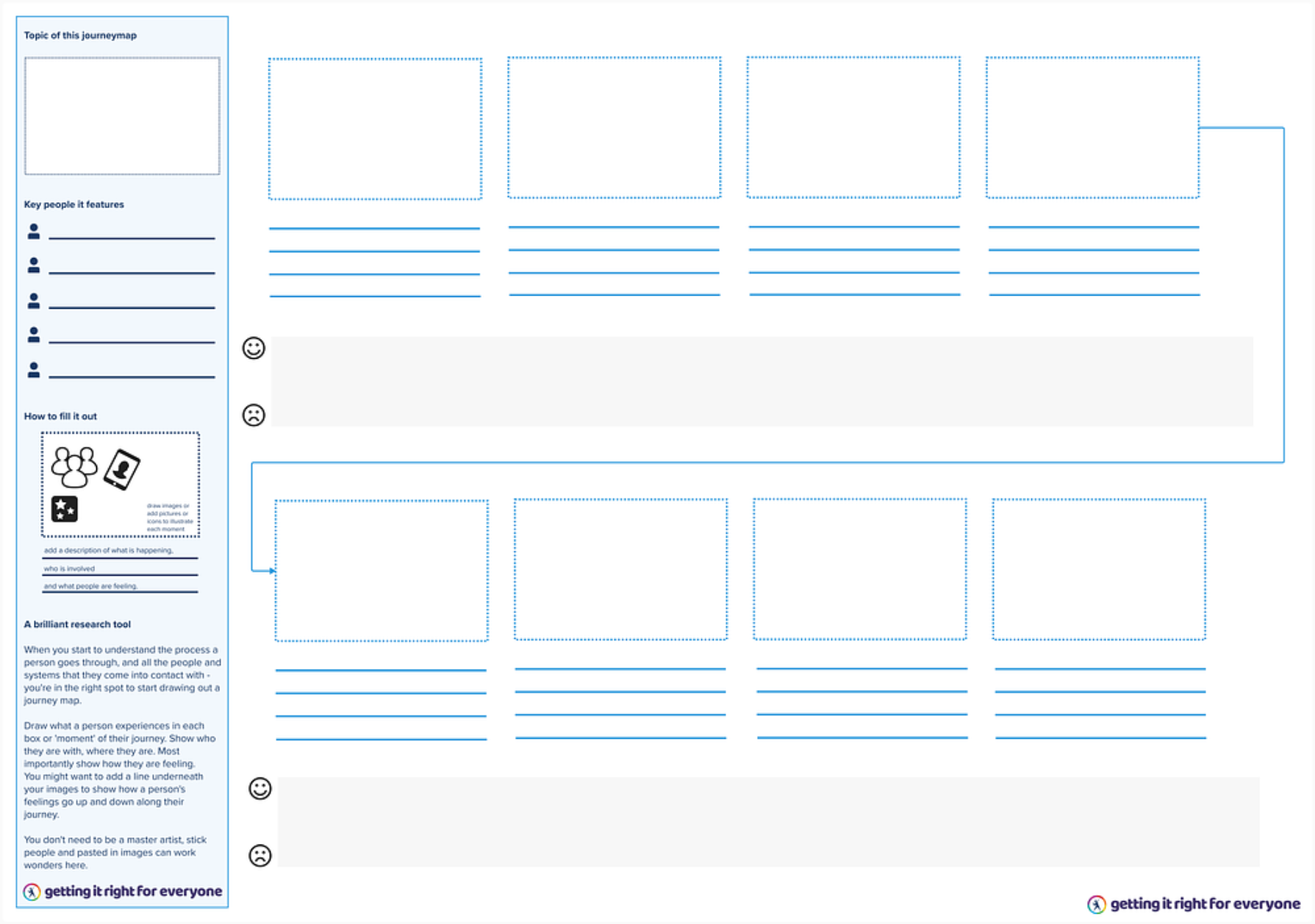Using journey mapping to understand people’s experiences of health and social care support.
The Scottish Government’s Getting it Right for Everyone (GIRFE) initiative brought together Health and Social Care Partnerships (HSCPs) across Scotland to create, share, and develop ideas as part of co-designing an adult practice model for health and social care.
As a project, GIRFE was entirely dependent on the capacity of the HSCPs to undertake engagement with their local communities and staff, which could then be brought together as a national cohort to inform the development of a toolkit and principles.
The teams were working across 5 themes to understand a range of different contexts. These were:
- people in prisons
- people in recovery from problematic use of drugs or alcohol
- people registered at ‘deep end’ GP practices
- families with multiple and/or complex needs; and young people in transition from child to adult services, and
- older people and frailty.
The partnerships taking part received training and coaching from the Office of the Chief Designer to make sure engagement met data protection requirements, and was ethical and inclusive for those taking part. The tools selected to support teams to understand the current situation as part of the co-design process included journey mapping.
Journey mapping can be used in different ways. For the GIRFE project it was used as a way of engaging with people with lived experience and staff to describe their experiences of the current system. The information from journey mapping was used to understand what was difficult or not working for people, as well as to highlight examples of good practice. This also enabled pathfinders and partners to make sense of the challenges and opportunities across the five themes.
 Download template
Download template
What was done
The HSCPs did the work to create safe, supported and welcoming spaces for co-design activities with people with lived experience and staff. Having generated the data in their local areas, rounds of national sensemaking took place to agree a set of national insights.
Approximately, 145 person-centred journey maps were produced by the teams through engagement with people accessing and delivering services. A journey map is a visualisation of an individual person’s experience over time when they’re aiming to complete a goal. Journey maps can be complex. They contain written descriptions about the different aspects of someone's journey — including:
- their actions
- their thoughts
- their emotions
- the opportunities and challenges experienced by a person
As well as engaging with people with lived experience and staff to understand their experiences, the findings meant the HSCPs could work together to make sense of the challenges and opportunities across the five themes.
Through the sense-making process, cross-cutting insights were identified and taken forward into the national process. These insights went forward into the ideation and prototyping stages and, while giving a rich picture of the common challenges experienced by people, also played a vital role in understanding the current barriers and enablers in the system.
The output and outcome
This journey mapping work done by the pathfinders was the one of the most important and powerful pieces of the design process. It focused all the work from that point on people with lived experience and staff to understand their experience. It also enabled HSCPs to look at challenges and opportunities across the five themes.
A national sensemaking day was held with teams to share the maps, check the insights, and to produce and prioritise ‘how might we?’ statements. A ‘how might we?’ statement is a way of framing a problem into opportunities for the next stage of the design process. These then moved to generating ideas and prototyping with people with lived experience, and the development of person-centred outcomes. The golden thread throughout the entire process were the insights generated by the journey mapping.
Key learning points
A range of findings were developed as part of the sense-making process. These were shared at thematic level, as well as a national level, across relevant Scottish Government policy teams.
Hints and tips
- Journey maps don’t need to look polished and finished if you’re developing them with people.
- Keep the focus on people and their experiences, otherwise it becomes about the service or business process.
- Make sure people you’re working with have enough time to work through exercises.
- Write down exactly what people say as quotes so that they can be used in the next steps of the design process
- Take time for sense-making activities, particularly if working with large amounts of data.
- People should be part of the analysis process so they can relate to the insights.
